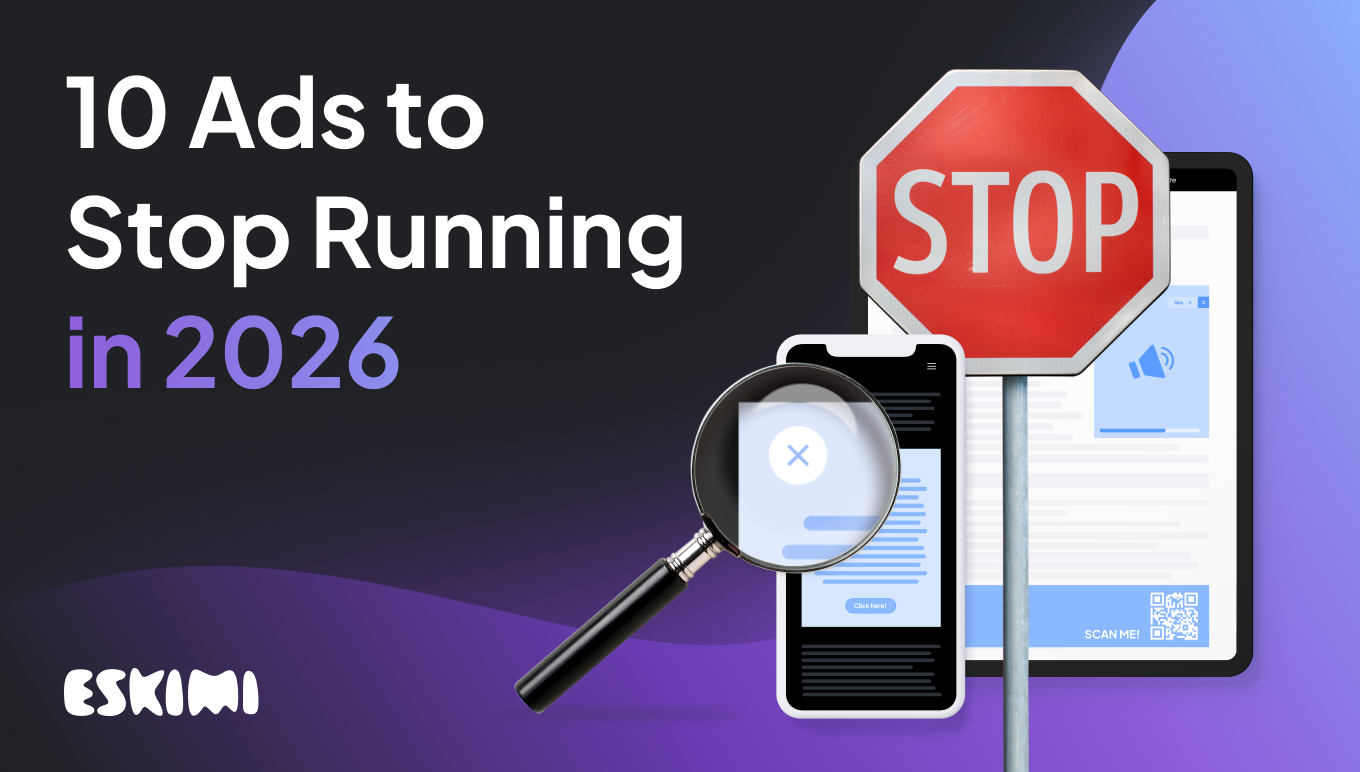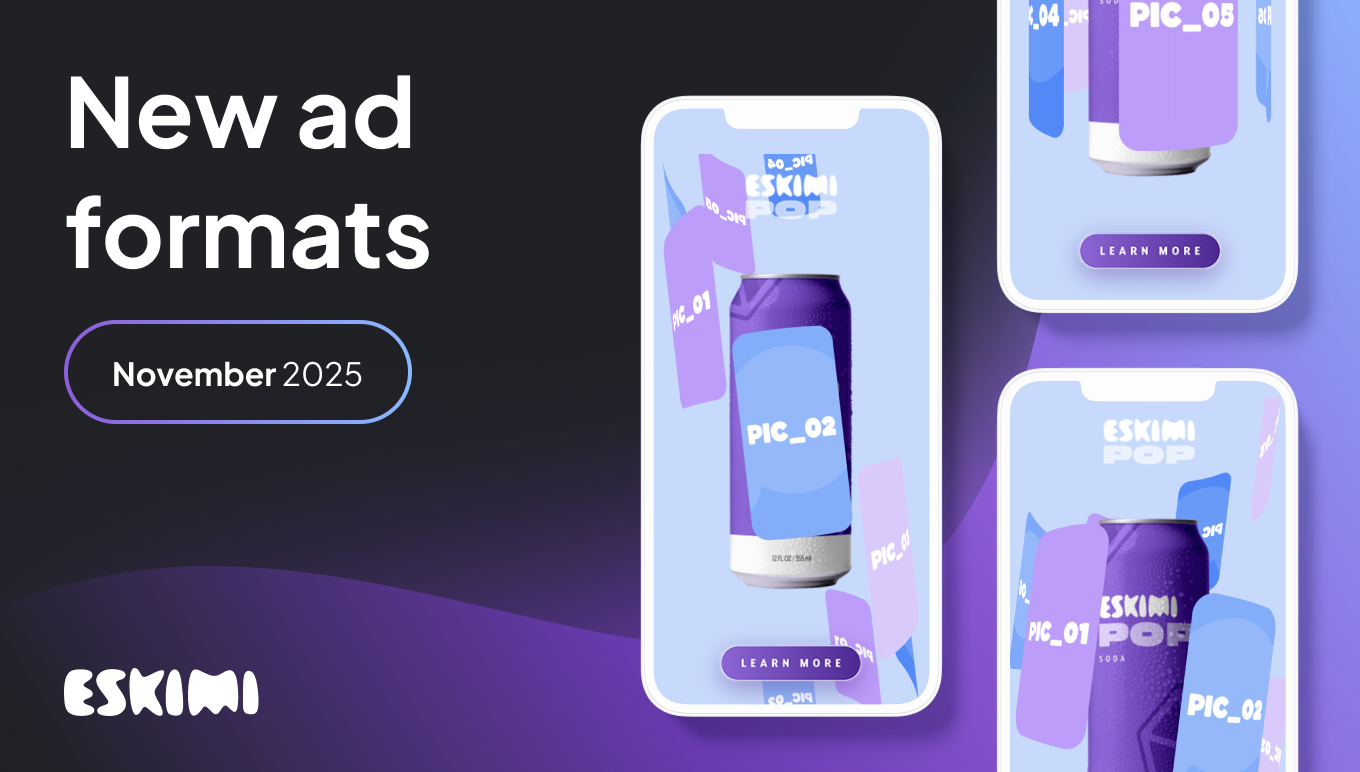Anatomy of a High-Performing Display Awareness Ad

Not-so-shocking news: the advertising landscape is evolving, technologies change, and user preferences shift. Yet, one constant remains: the necessity for effective display ads that capture attention and drive action.
Crafting a high-performing display awareness ad is a piece of cake. Don’t let the phrase confuse you, we’re not pointing to the ease of creating an ad. We’re referring to the nature of baking — sticking to a recipe, weighing your ingredients and being as precise as possible when following the instructions.
Let’s bake the perfect high-performing display awareness ad.
1. Saliency
According to research by Jenni Romaniuk and Byron Sharp, brand salience is a “brand’s propensity to be noticed or come to mind in buying situations”. It's the ad's magnetic force that draws the viewer's attention.
- Visual distinctiveness: Effective ads possess unique visual elements that differentiate them from the surrounding content. This could be through the use of vibrant colors, dynamic shapes, or intriguing imagery.
- Emotional resonance: Ads that evoke strong emotions – whether joy, surprise, or nostalgia – tend to stick in the viewer's mind. The key is to ensure that the emotion aligns with the brand's message and identity.
- Relevance: An ad's content should be relevant to its audience. This can be achieved through targeting, but also by ensuring that the ad's message aligns with current trends and events.
2. Strong CTA
Every effective display ad should culminate in a compelling Call to Action (CTA). It's the bridge that transitions viewers from passive observers to active participants.
- Clear messaging and less clutter: A CTA should be direct and unambiguous and not be drowned in graphics or content. As reported by VWO, Open Mile experienced a remarkable 232% increase in conversion rates following a redesign of their CTA, which involved eliminating unnecessary elements and incorporating more white space..
- Positioning and size: Place your CTA in a prominent location within the ad, ensuring it's large enough to be easily noticed, but not so dominant that it overshadows the ad's content.
- Urgency and incentive: Encourage immediate action by incorporating elements of urgency ("Limited Time Offer!") or offering incentives ("Get 10% off your first purchase").
3. Interaction
To enhance interaction with the ad, incorporate elements like video, audio, and interactive features to engage users in a more immersive experience.
- Interactivity: Allowing users to interact with your ad – be it through a quiz, a slider, or a clickable hotspot – increases engagement rates.
- Dynamic content: Videos and animations can tell a story more effectively than static images, capturing attention for longer durations.
Mobile optimization: Ensure that your rich media ads are optimized for mobile viewing, considering the majority of users access content on-the-go. According to research by Adnami, by 2025 it is predicted that 72% of consumers will consume data exclusively on mobile. Moreover, if a consumer engages with an ad through touch, spontaneous recall increases to 28%
4. Size & layout
The dimensions and layout of an ad play a crucial role in its effectiveness. While there isn't a one-size-fits-all answer, there are best practices to guide your design decisions.
Ad dimensions: Popular sizes like 300x250 (Medium Rectangle), 728x90 (Leaderboard), and 160x600 (Wide Skyscraper) tend to perform well across platforms. According to Insider Intelligence, mobile ads that cover 80% of the screen receive 6.6 seconds of attention from the average smartphone user. That’s more than 2X the attention received by ads with 50% screen cover and about 8X that of ads covering less than 10% of the screen.

Hierarchy of elements: Prioritize elements based on their importance. Typically, the logo, main message, visual, and CTA should be clearly distinguishable.
5. Layout/logo
Your ad's layout and the placement of your logo are pivotal in reinforcing brand identity and ensuring brand recall. A recent post at Neurons showed that almost 50% of ads were placing the brand in the "corner of death." This area is well known to be a place where nobody pays attention.
If you have more questions on how to create a memorable ad, the Eskimi team is more than happy to help with ideas, execution, budget and anything else you need to get eyeballs on your brand.
First impressions matter
Making a good first impression is more challenging than ever. Neurons ran the world’s most extensive consumer neuroscience study on mobile devices alongside the Mobile Marketing Association & the Advertising Research Foundation, and the results are riveting.
- It only takes 700 milliseconds to trigger an emotional response
- Only 67% of ads are seen
- Only 10% of ads create an emotional response
- >50% of ads create a memory response
- 95% or more of your ad viewers will likely miss whatever you show at the lower right-hand corner
To create a memorable ad, your ingredients and execution should be as close to perfection as possible. If you need even more insights on putting together a high-performing display awareness ad, feel free to contact our team.
Level Up Your Advertising with Eskimi
- Reach 96% of Open Web
- 2,500+ Targeting Options
- 100% Managed or Self-Service
- In-House Creative Studio Team
- Display, Video, In-Game & CTV
- #1 Rated DSP on G2




.png)